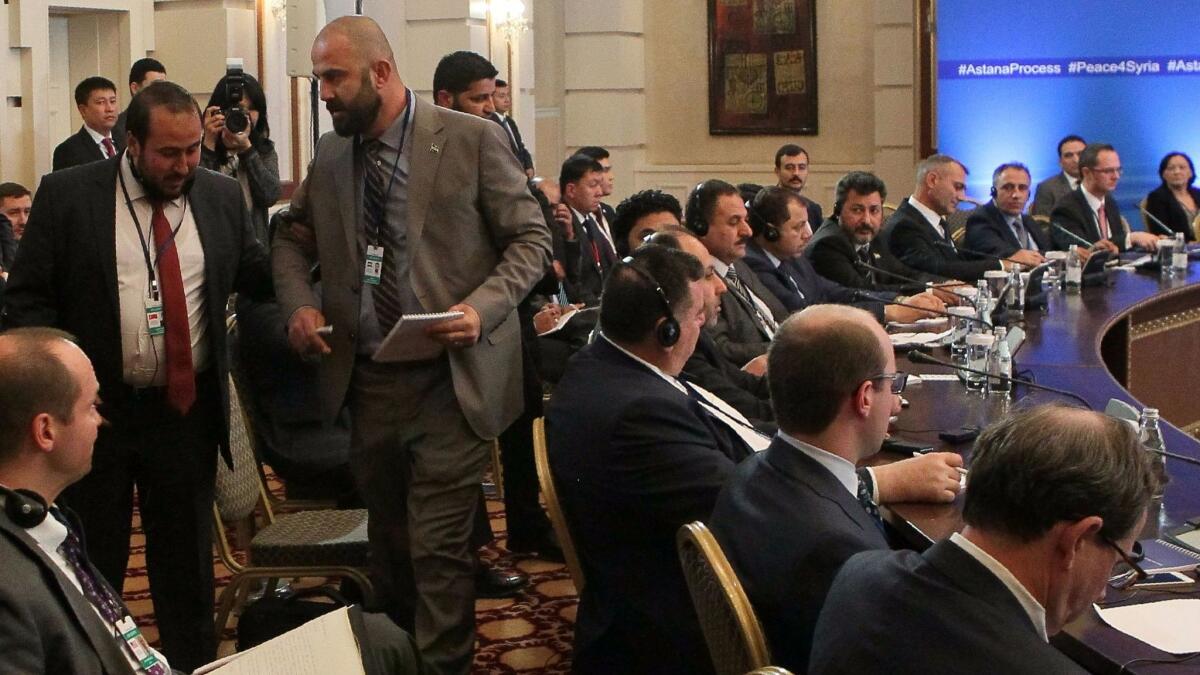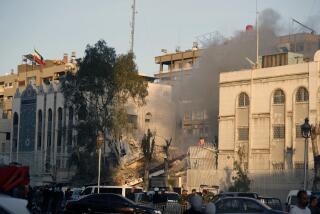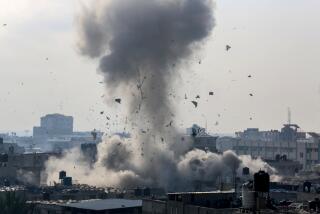Here’s why the latest Syrian cease-fire plan may be fatally flawed from the start

Midway through the closing ceremony of the fourth round of Syrian peace talks on Thursday, as delegates from Russia, Turkey and Iran prepared to sign an agreement that would create “de-escalation zones” in Syria, a Syrian rebel fighter stood up.
“Iran[ians] are criminals!” shouted the rebel, Yasser Abdul Rahim, pointing a finger at the Iranian delegation. “They [should] not sign! We do not accept their guarantee!”
He ripped the headphones off his head and slammed them on the table in front of him.
“We’ll see you on the battlefield. We’re not giving up,” he said, turning to leave.
The outburst was yet another example of how difficult it has been to create a lasting cease-fire in Syria, where a six-year civil war is estimated to have killed more than 400,000 people, made millions refugees and devastated large swaths of the country.

On Thursday, Russia, the top supporter of Syrian President Bashar Assad, won agreement for a comprehensive draft of a proposal that would pause fighting in four areas of the country, starting on Saturday, with international troops acting as monitors to the cease-fire.
But like others before it, the agreement appears to have arrived stillborn. The opposition refused to sign. A statement released later on Thursday by the rebel delegation said it would not accept any role for Iran “and its affiliated militias.”
Iran — which, like Russia, has been a staunch supporter of the Assad government — has dispatched thousands of Shiite irregulars from Lebanon, Iraq and Afghanistan to bolster Damascus’ battered troops. Members of Iran’s elite Quds Force, a branch of its Revolutionary Guards corps, act primarily as battlefield advisors.
The zones delineated in the agreement are in areas where rebel factions, excluding Islamic State, hold sway. According to an Arabic translation of the draft agreement given to The Times, the de-escalation agreement would encompass Idlib province, northern areas in the central province of Homs, the besieged Damascus suburb of eastern Ghouta and segments of southern Syria.
The agreement, hammered out in the Kazakh capital, Astana, would bring about an end to the fighting in those areas using “any type of weapons,” while guaranteeing unfettered access to humanitarian aid and restoring basic services. The zones would be established for six months, with the possibility for extension, according to Alexander Lavrentiev, head of the Russian delegation.
The zones would also have border checkpoints manned by both government soldiers and rebels, who would “guarantee the freedom of movement of civilians… humanitarian aid delivery, as well as economic activities,” according to the draft proposal, even as they “continue the fight against [Islamic State] and the Nusra Front.” The latter group, which is affiliated with Al Qaeda, has changed its name to the Organization for the Liberation of Syria but is still widely known as the Nusra Front.
Although it was not mentioned in the copy of the proposal, activists said that control of the enclaves would be in the hands of local councils, pro-opposition administrative bodies that have risen in many areas in the wake of the state’s ouster.
The agreement was hailed by the U.N.’s special envoy for Syria, Staffan de Mistura.
“Today in Astana, I think we have been able to witness an important promising positive step in the right direction in the process of de-escalation of the conflict,” said Mistura in a press conference in Astana, according to a transcript provided by the U.N.
Yet it was not clear if the injunction on weapons use in the safe zones would extend to Syrian government warplanes, which continue to mount a large-scale air campaign on rebel-held territories throughout the country — including the four areas mentioned in the proposal. However, Lavrentiev said Russia would do everything possible to ensure Syria’s air force would be grounded.
“The Syrian Foreign Ministry has stated that the leadership of that country welcomes the agreements on creating de-escalation zones and ceases its aviation flights over them. We express the confidence that after such a statement the flights by Syrian combat aircraft and their operation on the territory of de-escalation zones will cease“ said Lavrentiev, according to a report by the Russian state news agency, Tass.
Russian aircraft would “cease combat operations on this territory,” he continued, but only if the opposition in the the de-escalation zones did not mount attacks to “destabilize the situation in the country’s other territories.”
The proposal, said pro-government media activist Nicolas Zahr, would formalize crossings for commercial goods shuttling from government to rebel-held areas that had been opened up in recent weeks.
Zahr mentioned commercial corridors that would go from government-controlled parts of Aleppo province, in the far north near Turkey, towards Idlib, immediately to the south; and from the countryside areas of southern Syria towards Daraa, near the Jordanian border.
The U.S., which was represented at the talks by Acting Assistant Secretary of State Stuart E. Jones, said it “appreciate[d] the efforts of Turkey and the Russian Federation to pursue this agreement.” However, Jones did not participate, and the State Department statement said it had “reason to be cautious.”
“We continue to have concerns about the Astana agreement, including the involvement of Iran as a so-called ‘guarantor.’ Iran’s activities in Syria have only contributed to the violence, not stopped it, and Iran’s unquestioning support for the Assad regime has perpetuated the misery of ordinary Syrians,” the statement added.
It also said that the U.S. “expect[ed] the regime to stop all attacks on civilians and opposition forces, something they have never done.”
“We expect Russia to ensure regime compliance.”
Even if Iran is excluded, the proposal did not elaborate on how the opposition would be able to separate itself from what Moscow and Damascus deem “terrorist organizations,” which the agreement said included the Nusra Front.
The group has a major presence in a number of the prospective zones, and its jihadists are an important battlefield asset who have spearheaded much of the opposition’s gains.
ALSO:
At least 46 killed in Islamic State attack in Syria, including civilians fleeing the fight
How long can Jordan keep walking the Middle East tightrope?
A small town in Italy was losing population. Now Syrian refugees are key to its survival
Bulos is a special correspondent.
More to Read
Start your day right
Sign up for Essential California for news, features and recommendations from the L.A. Times and beyond in your inbox six days a week.
You may occasionally receive promotional content from the Los Angeles Times.







